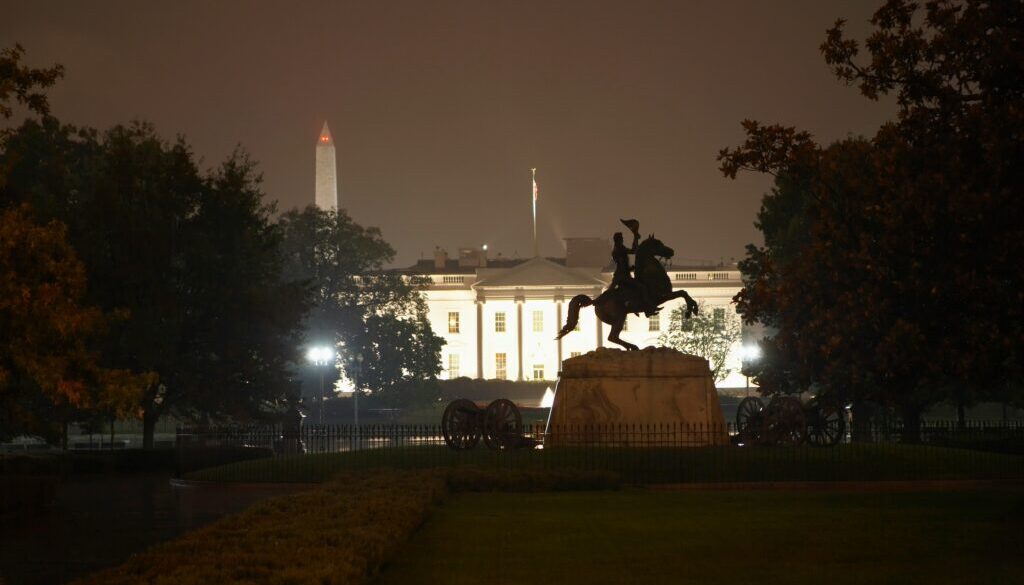Can anything be done to Trump-proof the environment?
As advocacy groups brace for a new administration under President-elect Donald Trump — fearing a slew of deregulation and policy changes that would undermine a range of environmental health measures — some are pondering ways to try to “Trump-proof” the planet.
Trump racked up the worst environmental record of any president during his first term, according to several advocacy organizations, and many worry his second time around will be even worse.
They expect across-the-board cuts to federal budgets and staff, including the Environmental Protection Agency, Department of Interior, and other agencies that play key roles in protecting human and environmental health. And they forecast efforts to reverse environmentally friendly policies protested by powerful corporate players.
“I suspect Trump will be less restrained than last time… more aggressive and damaging,” said Brett Hartl, with the Center for Biological Diversity. “We’ll wait for the storm to hit and fight back,” he added.
These concerns come after the Biden administration has implemented of many hard-fought measures such as new standards to address widespread contamination of US drinking water with per- and polyfluoroalkyl substances (PFAS), and environmental justice initiatives to better protect marginalized communities from industrial pollution.
The current administration has, just this month alone, completed a series of steps lauded by conservationists and environmentalists that include finalizing rules to limit oil drilling in the Arctic National Wildlife Refuge, and finishing a proposal to restrict oil exploration and grazing in 65 million acres of sage grouse habitat.
Now, with Trump headed to the White House, more needs to be done, said Michelle Chan, vice president of programs for the environmental groups Friends of the Earth. First, she said, the administration could finish dispensing funds from the Inflation Reduction Act. The sweeping legislation has provided billions of dollars toward more energy efficient infrastructure, pollution reduction measures, and other programs.
Once out the door, that money will be difficult if not impossible to “claw back,” she said. “The last bits should be pushed out.”
The US should also take new steps to end financing of fossil fuel projects through the US Export-Import Bank, which helps finance such projects around the world, Chan said. The bank is meeting this month to make plans for the coming years. Friends of the Earth and other advocacy groups have pressured the Biden Administration and the bank to cease financing fossil fuel projects, which has amounted to billions of dollars in recent years.
“If the US shows up in that meeting this month agreeing to [end] fossil fuel financing, that is something that could potentially live on beyond the end of the Biden Admin,” Chan said.
Meanwhile, several important legislative maneuvers are on the horizon that could help slow down an anti-environmental agenda, advocates said. For one, the EPA is due to soon decide whether or not to re-issue a handful of waivers to California to give the state the authority to enforce stronger-than-federal air standards, and to also aim to totally get rid of fossil fuel-powered cars by 2035.
California Gov. Gavin Newsom met with leaders in Washington DC this week to advocate for the waivers and other measures that include disaster funding, and money for climate and clean-air efforts.
Another issue advocates say should be addressed before the change in administration is the export of liquefied natural gas (LNG). President Biden announced a temporary pause on pending decisions on LNG exports earlier this year but climate advocates are pushing Biden to do more to slow down or reject export permits.
(Two LNG projects in Texas had their permits revoked by a panel of the DC Circuit Court of Appeals, though some members of Congress are applying pressure to reverse this decision.)
Some of those in the environmental health community emphasized that regardless of partisan sentiment, they will be working with state policymakers on environmental and public health protection efforts, including to try to address toxic substances in food and water.
“There’s no issue that’s less partisan than wanting to avoid toxic chemicals that might cause cancer or other health harms,” said Scott Faber, senior vice president of governmental affairs with the Environmental Working Group.
Moreover, environmental advocates can push for actions within states. For protections against toxic chemicals like PFAS, “states have led the way,” Faber said, and he sees that likely to continue.
A total of 10 states have set standards for PFAS, for example. At the federal level, the EPA finalized enforceable limits for levels of six toxic PFAS chemicals in drinking water in April.
If a hostile EPA were to repeal that standard, it “would simply poison many of the people who just voted to put President Trump in office for a second time,” Faber added.
“The flip side is that the election of Donald Trump has motivated people who enjoy these public health protections… ordinary people, regardless of party, will be fighting efforts to weaken public health efforts,” he said. “Nobody who voted for Trump voted for food that costs more and is less safe.”
States could help safeguard the environment and health in other ways, for example by pursuing clean energy projects, limiting oil drilling, investing in green infrastructure, restricting the use of toxic substances in food, and more – all of which states like New York and California have done and are trying to do, advocates said.
Trump targeted some of California’s environmental laws in his first term, but often lost when challenged in court — more than 80% of the time, in fact.
Others were less positive about being able to do much, if anything, to Trump-proof environmental safeguards before he takes office on January 20, 2025.
“They’re going to start enacting a sweeping de-regulatory, anti-environmental agenda,” Hartl said. “I can’t think of anything that would stop them from attempting it. We just have to fight it when it arrives.”
Biden could issue executive orders in his remaining time in office, of course, but Hartl said the these are likely to be overturned—and moreover, “anything that is perceived to be done designed to slow them down will only make them more aggressive,” Hartl said.
“Probably the best thing a Biden admin can do is wrap things up in an orderly and sensible fashion that doesn’t seem overly partisan or political.”
(Featured image by Getty Images for Unsplash+.)
 EWG
EWG


